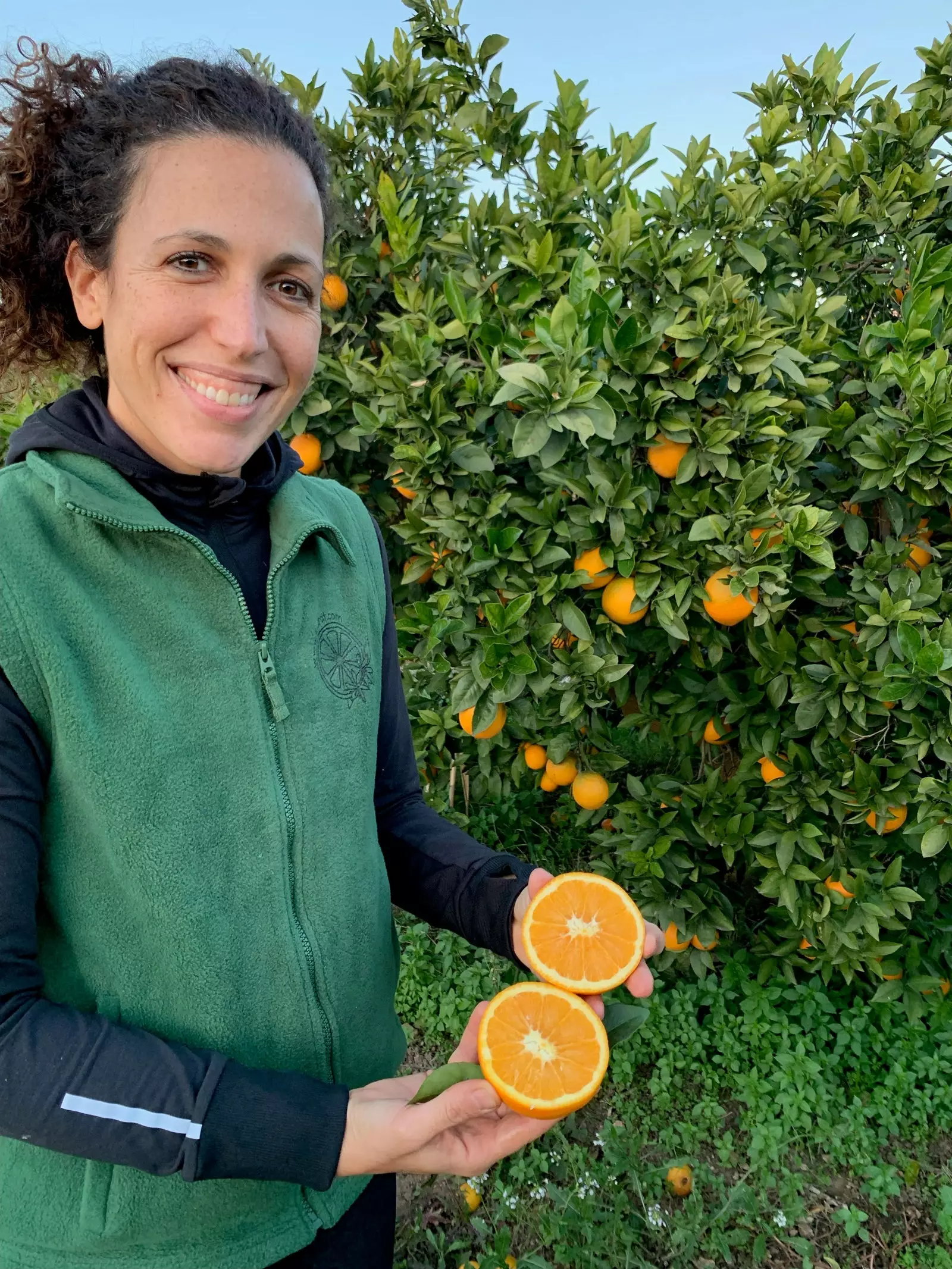Adopt an orange tree? Surely you have associated this word with the adoption of an animal, but now you can also do it with a Valencian orange . What better gift for Christmas than ensuring your dose of vitamin C all year round!
Llaurat, a family business, located in Ribera, cradle of orange Valencia , has launched this adoption system with the main objective of promote respect for the environment . “We want to show the world that a new way of farming is possible. We want promote the cultivation of oranges in their traditional irrigated cultivation areas , to avoid the proliferation of new cultivation areas in forest areas, avoiding the environmental impact that this entails”, Paula Perucho, owner of Llaurat, explains to Traveler.es.
Another of their objectives is to avoid excessive use of resources. “ We want to grow only what is going to be consumed . For this we created the adoption formula. A farmer, a family, for each orange tree. This way we know that each liter of water, each day of care, will be justified”, she underlines.
NAVELINA ORANGE
Llaurat oranges are of the variety naveline , oval, thin-skinned, sweet flavor and lots of juice. And with several important peculiarities: they have no seeds Y They can last in good condition about three weeks if they are well preserved in a cool and dry place.
"One of its most appreciated characteristics is that the membrane that separates its segments is so thin that it melts in the mouth," adds Paula.
And of course, they are ecological . One of the main problems that this land is currently facing is the deforestation of forests for the cultivation of large areas . "The problem is that, on the one hand, a large amount of fruit is grown that later ends up in the garbage, and on the other hand, being in areas far from water, they must bring the necessary water from rivers, or drain underground water, towards these new irrigated land creating new water requirements where there were none, which ends up producing a great environmental impact ”. This is how orange cultivation is giving way to more profitable ones such as persimmons and avocados.
Today, in Llaurat they have some 379 orange trees , some of them already have farmers (adopters) and others are still looking for theirs. Do you want to be one of them?
Keep in mind that the orange tree is a type of tree that can produce a lot during some years and others not so much. Secondly, oranges ripen at a different rate on each of the trees , that is why they are shared to ensure that all adopters always have their kg of oranges.

The oranges are of the Navelina variety.
See images: A getaway to Empty Spain: the best hotels where silence rules
HOW YOU CAN ADOPT YOUR ORANGE TREE
When someone give or adopt an orange tree , you have two options. The first is to give away the adoption for a season , which covers the costs of caring for the orange tree for the whole year. That is, costs of pruning, tillage, irrigation, etc., for a price of about 80 euros. "This adoption allows you to harvest the oranges that your tree produces in that season, which will be a total of 80 kilos."
The second option is to give away the adoption with the logistics costs included. . In other words, the costs of delivering those 80 kilos to the new farmer's house are included, which will be sent in eight 10-kilo boxes, throughout the harvest season, on the dates chosen. In this option, you must choose the country where the new adopter will want to receive their crops. The cost in this case will be different depending on the country where the harvest is sent.
Harvest times are between the second week of November and the second week of February , although they may vary depending on the ripening of the orange.
“On the other hand, everyone adopters can come to visit your tree whenever they want , and if they do it during the harvest season, they will be able to harvest their oranges themselves. They can also see their own tree from our virtual field, if the distance does not allow them to come to the field”. If you are interested, all you have to do is think of the name of your tree and that's it.
